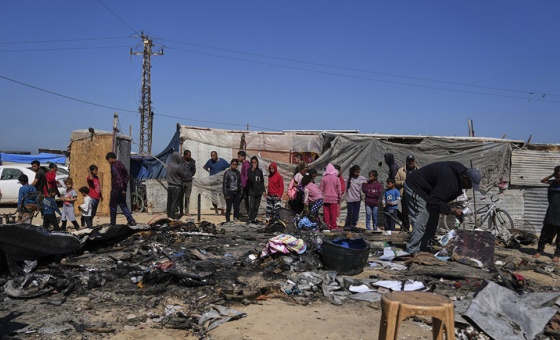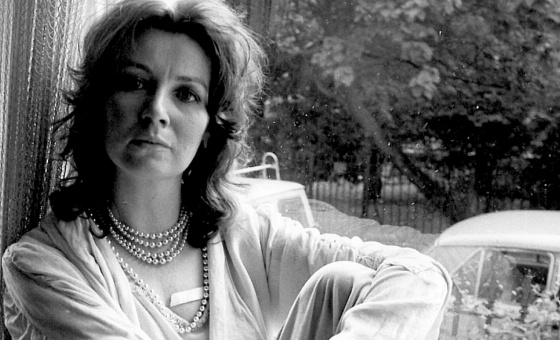This is the last article you can read this month
You can read more article this month
You can read more articles this month
Sorry your limit is up for this month
Reset on:
Please help support the Morning Star by subscribing here
Another week and another celebrity is questioned over alleged historic child sexual abuse. Pop stars, TV personalities and radio DJs have captured the media headlines in recent years but they distract from the role of the Establishment in covering-up paedophile MPs.
The latest revelations follow news that a National Police Unit has had to be created to collate details of all the paedophile investigations currently underway. It is symptomatic of the scale of the problem and the need to track crimes taking place across police authority geographical boundaries.
It confirms suspicions raised earlier that paedophiles operated in rings targeting children’s homes around Britain and were sheltered by deliberate cover-ups.
A former Scotland Yard commander has admitted he knew of an alleged paedophile ring at Westminster. John O’Connor, once head of the Flying Squad, confirmed there were rumours of a sex scandal and he had been on standby for a major investigation.
His allegations suggested that prime minister Margaret Thatcher covered up child abuse allegations against a senior minister in the 1980s. O’Connor said: “I remember when this was first flying about. I think it was in the early 1980s but then it just seemed to die a natural death.
“There was a rumour floating around the Yard at the time that there was a big paedophile ring in Westminster and that a major investigation was likely. We were on standby, ready for something special.” Nothing transpired.
Historic evidence of MPs involved in paedophile attacks on vulnerable children emerges periodically before the story is then buried again. Six years ago, in March 2008, the world’s media gathered outside Haut de la Garenne, a former workhouse and children’s home on Jersey.
Police were digging for possible human remains and other evidence after almost 200 former residents of the home alleged abuse, including torture and rape, by staff and visitors over many years, with claims that some youngsters had disappeared.
The investigation turned into a farce when no evidence of mass graves was found and officers from mainland British forces, who had previously taken over leadership of the local force on a mission to root out alleged “endemic corruption” within Jersey’s constabulary, led the high-profile investigation into historical child abuse on the island.
Jersey’s former chief officer Graham Power and its former deputy chief officer Lenny Harper, the senior officer in the Haut de la Garenne abuse inquiry, recently confirmed their belief that the home was at the heart of a well-protected paedophile ring.
Possible links are emerging between abuse in Jersey children’s homes and the earlier notorious Islington children’s homes paedophile ring in the 1980s. A key figure in the ring, Islington’s deputy children’s homes superintendent Nicholas Rabet, came from Jersey. He had worked there in childcare and regularly took children from the north London council’s homes on camping trips to the island.
Rabet fled Britain after the press exposed him but was charged in Thailand in 2006 with abusing 30 boys there, the youngest six. He killed himself before he could be tried. His ally Neil Hocquart killed himself in custody in Ely, Cambridgeshire, in 1991, after being found with hundreds of paedophile videos. It is thought dozens of vulnerable children were abused by a number of paedophiles including MPs.
However, most of the abusers escaped justice because allegations made at the time by victims were ignored and many files, which contained corroborating evidence, have been lost or shredded.
This is becoming a trend in this unfolding story. Files go missing or are seized by Special Branch or MI5 or they are shredded by government whips along with details of paedophile MPs, or councils “lose” or shred them.
In another example of this pattern, a former social services official has said his warnings about the threat of a Westminster-based paedophile network were ignored by civil servants because he was told “there were too many of them over there.”
David Tombs, who ran Hereford and Worcester social services, said he warned the government after the arrest of notorious paedophile Peter Righton in 1992. “I was disappointed because I was told that I was probably wasting my time, that there were — and the words used were along these lines — that there were too many of them over there. Now, I was talking about paedophilia. I was in the Department of Health and the ‘over there’ to me indicated, although the words weren’t used, within Parliament or within government and Whitehall.”
An example from 20 years ago provides good evidence of what to expect from the new Home Office inquiry, whoever is appointed to lead it. The North Wales child abuse scandal was the subject of a three-year, £13 million investigation known as the Waterhouse Inquiry into the sexual abuse of children in Wales, including the Bryn Estyn children’s home at Wrexham which was visited by paedophile MP Peter Morrison, an adviser to Margaret Thatcher between 1974 and 1990.
The report was published in 2000.However the remit of that inquiry was narrowed to ensure that names of high-profile paedophiles such as MPs were not recorded.
In March 1994 Clwyd County Council commissioned a further inquiry, the 1994 Jillings Report, undertaken by a panel headed by John Jillings, a former director of social services with Derbyshire County Council. The panel of Jillings, Professor Jane Tunstall and Gerrilyn Smith (both experts on child abuse) met with considerable opposition.
The Jillings Report stated that allegations involving famous names and paedophile rings were beyond its remit, and something best addressed at a potential later public inquiry. The report concluded that its panel members had considered quitting before publication due to “the considerable constraints placed upon us.”
At the time of the Jillings investigation, the then newly appointed North Wales chief constable refused to meet the team or help with access to the police major-incident database. This resulted in the need to collect 70 duplicate and additional witness statements, obtained by local councillors and MPs, including Ann Clwyd, MP for Cynon Valley since 1984.
Some 130 boxes of material handed over by the council to the police were not made available to the panel. The council did not allow the inquiry to place a notice in the local press seeking information. The final Jillings report was not published because of the financial implications of compensation claims. A leaked copy of the report also states that Municipal Mutual Insurance suggested that the then chair of the council’s social services committee, Malcolm King, be sacked if he spoke out about the financial implications.
Photographs of men abusing boys in the North Wales paedophile scandal were deliberately destroyed by the authorities.
In November 2012, King commented: “Because it was suppressed, the lessons of the Jillings Report were not learned. It was the exchange of financial safety for the safety of real people. It was one of the most shameful parts of recent history.”
As a result of this evidence the police undertook its own investigation. The report of phase one of the police investigation, Operation Pallial, was published on April 29 2013. Since then there have been 283 allegations of abuse at children’s homes in north Wales between 1963 and 1992, with 56 potential suspects.
So after 20 years, justice has still not been done or been seen to be done. When it finally gets started, the new national inquiry into paedophile abuse has a considerable reputation to live down and will face the full force of an Establishment ready to defend the indefensible, cover-up MPs’ involvement and deny justice to victims.





